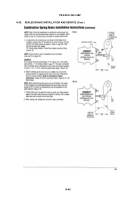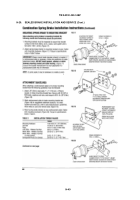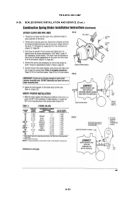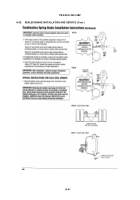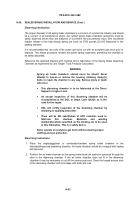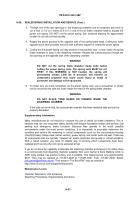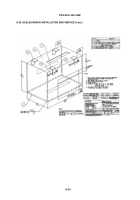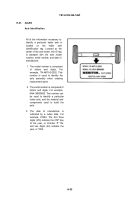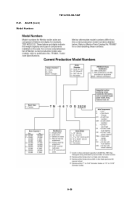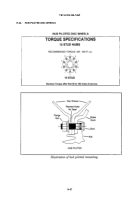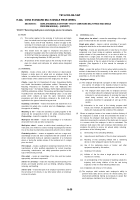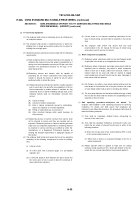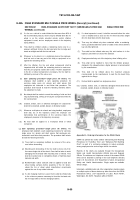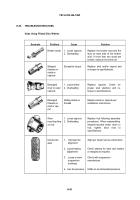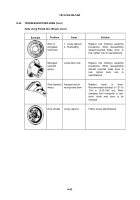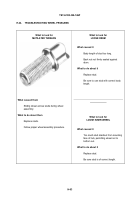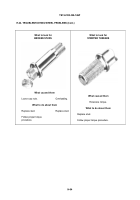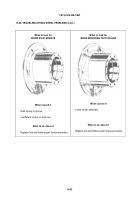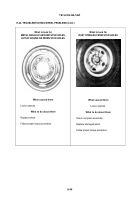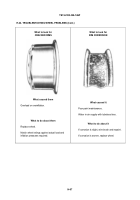TM-9-2330-326-14-P - Page 312 of 540
TM 9-2330-326-14&P
H-58
H-22A. OSHA STANDARD MULTI-SINGLE PIECE WHEEL
SECTION XV:
OSHA STANDARD 29 CFR PART 1910.177 (SERVICING MULTI-PIECE AND SINGLE
PIECE RIM WHEELS) – (EXCERPT)
1910.177 Servicing multi-piece and single piece rim wheels.
(a)
Scope
.
(1)
This section applies to the servicing of multi- piece and single
piece rim wheels used on large vehicles such as trucks, tractors,
trailers, buses and o
ff -road machines. It does not apply to the
servicing of rim wheels used on automobiles, or on pickup trucks
and vans utilizing automobile tires or truck tires designated “LT”.
(2)
This section does not apply to employers and places of
employment regulated under the Construction Safety Standards,
29 CFR Part 1926; the Agriculture Standards, 29 CRF part 1915;
or the Longshoring Standards, 29 CRF part 1916.
(3)
All provisions of this section apply to the servicing of both single
piece rim wheels and multi-piece rim wheels unless designated
otherwise.
(b)
Definitions.
Barriers
- means a fence, wall or other structure or object placed
between a single piece rim wheel and an employee during tire
inflation, to contain the rim wheel components in the event of the
sudden release of the contained air of the single piece rim wheel.
Charts
- means the U.S. Department of Labor, Occupational Safety
and Health Administration publications entitled “Demounting and
Mounting Procedures for Truck/Bus Tires” and “Multi-piece Rim
Matching Chart,”
the National Highway Traffic Safety Administration
(NHTSA) publications entitled: “Demounting and Mounting Procedures
Truck/Bus Tires” and “Multi-piece Rim Matching Chart,” or any other
poster which contains at least the same instructions safe
ty
precautions and other information contained in the charts that is
applicable to the types of wheels being serviced.
Installing a rim wheel
– means the transfer and attachment of an
assembled rim wheel onto a vehicle axle hub.
Removing
– means
the opposite of installing.
Mounting a tire
– means the assembly or putting together of the
wheel and tire components to form a rim wheel, including inflation.
Demounting
– means the opposite of mounting.
Multi-piece rim wheel
– means the assemblage of a multi-piece
wheel with the tire tub and other components.
Multi-piece wheel
– means a vehicle wheel consisting of two or
more parts, one of which is a side or locking ring designed to hold the
tire on the wheel by interlocking components when the tire is inflated.
Restraining device –
means an apparatus such as a cage rack,
assemblage of bars and other components that will constrain all rim
wheel components during an explosive separation of a multi-piece
wheel, or during the sudden release of the contained air of a single
piece rim wheel.
Rim manual
– means a publication containing instructions from the
manufacturer or other qualified organization for correct mounting,
demounting, maintenance, and safety precautions peculiar to the
type of wheel being serviced.
Rim wheel
– means an assemblage of tire, tube and liner (where
appropriate), and wheel components.
Service or servicing
– means the mounting and demounting of rim
wheels, and related activities such as inflating, deflating, installing,
removing, and handling.
Service area
– means that part of an employer’s premises used for
the servicing of rim wheels, or any other place where an employee
services rim wheels.
(b)
Definitions
(cont.).
Single piece rim wheel
– means the assemblage of the single
piece rim wheel with the tire and other components.
Single piece wheel
– means a vehicle consisting of one part,
designed to hold the tire on the wheel when the tire is inflated.
Trajectory
– means any potential path or route that a rim wheel
component may travel during an explosive separation, or the
sudden release of the pressurized air, or an area at which an
airblast from a single piece rim wheel may be released. The
trajectory may deviate from paths which are perpendicular to the
assembled position of the rim wheel at the time of separation or
explosion. (See Appendix A of this manual for examples of
trajectories.)
Wheel
– means that portion of the rim wheel which provides the
method of attachment of the assembly to the axle of a vehicle
and also provides the means to contain the inflated portion of the
assembly (i.e., the tire and/or tube).
(c)
Employee training.
(1) The employer shall provide a program to train all employees
who service rim wheels in the hazards involved in serving
those rim wheels and the safety procedures to be followed.
(i)
The employer shall assure that no employee services
any rim wheel unless the employee has been trained and
instructed in correct procedures of servicing the type of
wheel being serviced, and in the safe operating
procedures described in paragraph (f) and (g) of this
section.
(ii) Information to be used in the training program shall
include, at a minimum, the applicable data contained in the
charts (rim manuals) and the contents of this standard.
(2)
Where an employer knows or has reason to believe that any of
his employees is unable to read and understand the charts or
rim manual, the employer shall assure that the employee is
instructed concerning the contents of the charts and rim manual
in a manner which the employee is able to understand. The
employer shall assure that each employee demonstrates and
maintains the ability to service rim wheels safety, including
performance of the following tasks:
(i)
Demounting of tires (including deflation);
(ii)
Inspection and identification of the rim wheel components;
(iii)
Mounting of tires (including inflation with a restraining
device or other safeguard required by this section);
(iv)
Use of the restraining device or barrier, and other
equipment required by this section;
(v)
Handling of rim wheels;
(vi)
Inflation of the tire when a single piece rim wheel is
mounted on a vehicle;
(vii) An understanding of the necessity of standing outside the
trajectory both during inflation of the tire and during
inspection of the rim wheel following inflation and;
(viii) Installation and remov al of rim wheels.
(3) The employer shall evaluate each employee’s ability to
perform these tasks and to service rim wheels safely, and
shall provide additional training as necessary to assure that
each employee maintains his or her proficiency.
Back to Top

